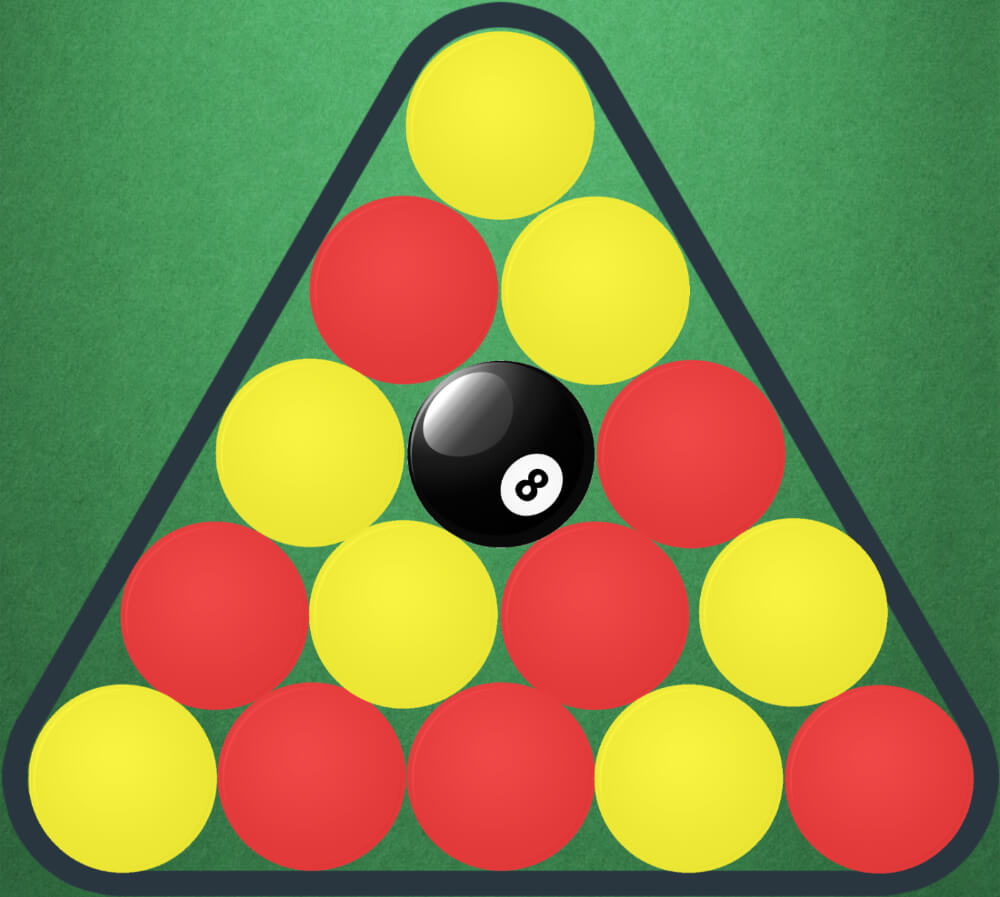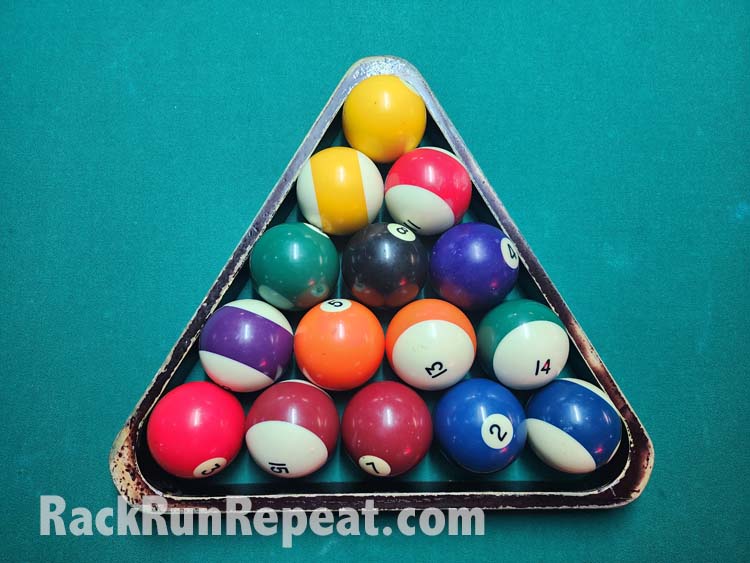How Do You Rack Pool Balls Like A Pro? The Ultimate Guide
Alright, listen up, pool sharks in the making! If you've ever wondered how do you rack pool balls properly, you're in the right place. Pool is more than just lining up shots and hoping for the best. Setting up that perfect break is where it all starts, and it all begins with how you rack those balls. Whether you're a casual player or aiming to be the next pool legend, mastering the art of racking can take your game to the next level.
Now, I know what you're thinking—"how complicated can racking be?" Well, my friend, there's more to it than just tossing the balls into a triangle and calling it a day. The way you set up that rack can influence the outcome of the game, especially when it comes to breaking. A tight, well-structured rack can lead to a powerful break, while a sloppy one might just ruin your momentum before it even starts.
So, buckle up, because we're diving deep into the world of pool racks, exploring techniques, tips, and tricks that will make you look like a pro. And don't worry, I'll keep it real, breaking it down in a way that even your grandma could understand. Let's get this party started!
Read also:How Long Was The Conclave For Pope Francis A Deep Dive Into The Papal Election
Here's a quick guide to what we'll cover:
- Biography of Pool Racking
- Tools You Need
- Racking Techniques
- Common Mistakes to Avoid
- Rack Variations
- Tips for a Perfect Rack
Biography of Pool Racking
Before we jump into the nitty-gritty, let's take a moment to appreciate the history behind racking pool balls. It's not just some random tradition; it's an essential part of the game's evolution. Pool, as we know it today, has been around since the 15th century, and over time, the rules and equipment have evolved significantly.
History of Pool Racks
Back in the day, players used to arrange the balls manually, without any fancy triangular racks. Imagine trying to line up 15 balls perfectly every single time—that's dedication right there. Eventually, someone got smart and invented the triangular rack, revolutionizing the game. Nowadays, you can find racks made from various materials, each with its own unique advantages.
Here's a quick overview of some common rack materials:
- Plastic: Lightweight and affordable, but might not last as long.
- Wood: Offers a classic look and feel, but can warp over time.
- Metal: Durable and long-lasting, perfect for heavy use.
Tools You Need to Rack Pool Balls
Alright, let's talk about the gear you'll need to get started. First and foremost, you'll obviously need a rack. But not just any rack—make sure it's the right size for your table. Standard racks are usually 5.75 inches, but if you're playing on a smaller table, you might need a mini rack. Don't forget the balls themselves; they should be in good condition, with no chips or scratches that could affect the game.
Additional Accessories
While a rack and balls are the basics, there are a few other tools that can enhance your experience:
Read also:Pope Francis Autobiography A Journey Of Faith Humility And Compassion
- Cue Stick: A good-quality cue stick can make a big difference in your game.
- Chalk: Helps improve your grip and control when striking the cue ball.
- Bridge: Useful for those tricky shots where you need extra support.
Racking Techniques
Now, let's dive into the techniques. There's a method to the madness, and it all starts with how you position the balls in the rack. The general rule is to place the 8-ball in the center, with the other balls arranged randomly around it. But here's the kicker—make sure the balls are snug against each other. A loose rack can lead to a weak break, which is the last thing you want.
Step-by-Step Guide
Follow these steps for a perfect rack every time:
- Place the rack on the table, ensuring it's aligned with the foot spot.
- Start by placing the 8-ball in the center of the rack.
- Fill in the remaining spaces with the other balls, making sure they're tight against each other.
- Once the rack is full, gently lift it off the table, leaving the balls in their perfect formation.
Common Mistakes to Avoid
Even the best of us make mistakes, and that's okay. The key is to learn from them. Here are a few common pitfalls to watch out for:
- Loose Rack: As I mentioned earlier, a loose rack can ruin your break. Make sure the balls are snug before lifting the rack.
- Improper Alignment: Ensure the rack is aligned with the foot spot. Misalignment can affect the trajectory of the cue ball during the break.
- Forgetting the 8-Ball: Always place the 8-ball in the center. It's a fundamental rule that can cost you the game if you forget.
Rack Variations
Not all pool games use the same rack. Depending on the type of pool you're playing, you might encounter different rack shapes and sizes. Here are a few examples:
8-Ball vs. 9-Ball
In 8-ball, you use a triangular rack with 15 balls. In 9-ball, you use a diamond-shaped rack with 9 balls. Each game has its own unique setup, so make sure you're familiar with the rules before you start.
Tips for a Perfect Rack
Alright, here's where the magic happens. These tips will help you take your racking skills to the next level:
- Practice Makes Perfect: The more you practice, the better you'll get. Try setting up racks repeatedly until it becomes second nature.
- Invest in Quality Gear: A good rack and well-maintained balls can make a huge difference in your game.
- Stay Calm and Focused: Pool is as much a mental game as it is a physical one. Keep your mind in the game, and don't rush through the setup.
Why Proper Racking Matters
Let me tell you something, folks—proper racking isn't just about following the rules. It's about setting yourself up for success. A well-racked game can lead to a powerful break, scattering the balls across the table and giving you a better chance at sinking those shots. On the flip side, a poor rack can result in a weak break, leaving you stuck behind the cue ball with no easy shots in sight.
Impact on the Game
The way you rack the balls can directly impact the flow of the game. A tight rack can lead to a strong break, creating opportunities for both players. Conversely, a loose rack can result in a weak break, making it harder to sink the balls and potentially giving your opponent an advantage.
Final Thoughts
So, there you have it, folks. Racking pool balls might seem like a simple task, but it's an essential part of the game that can significantly impact your performance. By following the techniques and tips outlined in this guide, you'll be well on your way to mastering the art of racking.
Now, here's the fun part—put what you've learned into practice. Grab a friend, head to your local pool hall, and show off your newfound skills. And remember, practice makes perfect. The more you play, the better you'll get.
Before you go, drop a comment below and let me know how your racking skills are coming along. And if you found this guide helpful, don't forget to share it with your pool-playing buddies. Let's keep the game alive and thriving!
Article Recommendations


